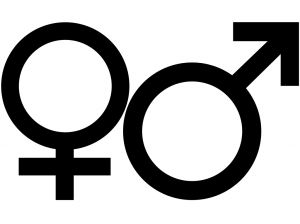History
A Divided Union
The Woman’s Movement
Feminism developed in the 1960s, many women were determined to break
the stereotypes imposed on them from the 1950s. This was catalysed by
women such as Betty Friedan who wrote an influential book on feminism.
The easier availability of the pill also allowed women to plan their families
so they could have a career. Women were also becoming increasingly educated
so could have a professional career.
While it is true that there were more women in employment that in the
1950s many were still working in traditional woman’s jobs. Many
wanted real careers and equal opportunities. The 1964 Civil Rights Act
banned discrimination on the grounds of race and sex. Women were determined
to put this law into effect.
1966: NOW -- A group of mostly middle class, white women formed the National Organisation for Women (NOW). NOW began attacking obvious examples of discrimination for example Stewardesses were not allowed to marry had to retire at 32.
1972: Educational Amendment Act -- The Education Amendment Act outlawed sex discrimination at school, so women followed the same curriculum as boys and the course was rewritten to give women more positive role models.
1967: NOW proposed the Equal Rights Amendment (ERA) -- This proposed to change the constitution to ensure women’s rights. This amendment was opposed by STOP ERA. They narrowly won and the constitution remained unchanged.
WHAT DID THEY ACHIEVE?
They made progress in social areas for example abortion became legal after
1973, women’s rights became an accepted part of women’s political
and cultural lifestyle and women became more aware of the discrimination
against them.
BUT
There was no real increase in women’s pay, the women’s movement
was divided, discrimination still existed in the form of the ‘glass
ceiling’ (the idea that women would not be promoted to senior levels
by companies on the grounds of sex) and ERA was defeated.
Reference Tools
Dictionary
Thesaurus
Maps
Scientific Calculator
Periodic Table
Translator
Unit Conversion
Divided Union
Introduction
Post War
The ‘Red Scare’
Civil Rights Movement
Non-Violent Direct Action
John F Kennedy
Lyndon Johnson
Growth of Black Power
The Woman’s Movement
The Student Movement
Nixon and Watergate
Cold War
Period 1945 - 1962
Period 1956 - 1962
Period 1962-1969
Period 1969 -1979
Period 1979 - 1985
Period 1985- 1991

